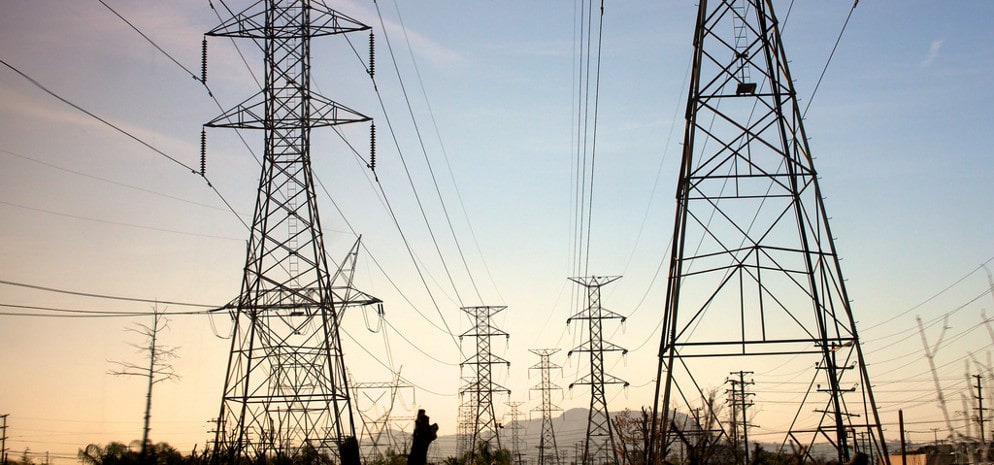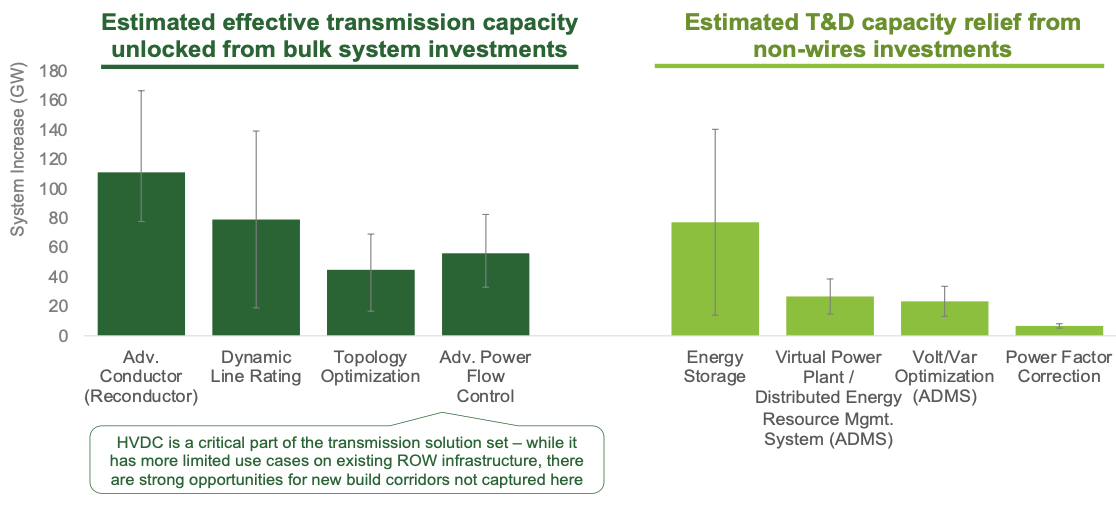The U.S. Department of Energy (DOE) aims to spark a national collaboration to accelerate near-term deployment of advanced grid technologies.
Deploying these technologies on the existing grid could support 20-100 GW of incremental peak demand if installed individually, says a DOE report, or significantly more when installed in “strategic combinations.” If deployed “overnight,” they could help defer an estimated $5-35 billion in transmission and distribution infrastructure costs over the next five years.
The technologies and their “full deployment potential” for expanding capacity on the existing transmission and distribution grids are shown in the image below.
DOE found that advanced conductors have the greatest potential. Energy storage as a transmission and distribution asset, with a potential nearly as high, has recently “started to see greater interest,” the report says.
DOE plans to invest $10.5 billion in deployment of the technologies through its Grid Resilience & Innovation Partnerships program.
Achieving “liftoff” for the technologies within three to five years is possible, DOE said, by deploying for each technology “6-12 large operational, no regrets deployments across a diverse set of utility contexts.”
Deploying the technologies can help utilities and regulators respond to “grid pressures including rapid demand growth, extreme weather, and new energy generation connections,” DOE says.
With efficient investment and cost allocation strategies, the deployments “could happen without directly increasing costs to ratepayers,” says a DOE summary of the report.
New transmission capacity “is still critically needed,” says the report, to interconnect new generation and increase transfer capabilities between regions. Yet the advanced technologies “can help serve as a bridge” as new transmission is developed, and can be incorporated in new expansion as well.
To build industry confidence in the technologies, DOE’s first priority is to foster transparent sharing of outcomes from early deployments of the technologies, “including lessons learned from successes and failures.”
DOE also aims to “advance industry execution know-how, robust planning and investment case approaches, and economic model innovation.”
Seeing roles for grid operators, utilities, regulators, policymakers, and technology providers, DOE suggested for each group “priority actions to pursue today.”
DOE will host a webinar on the report on May 13 at 10:30 a.m. Eastern time. The 96-page report is titled “Pathways to Commercial Liftoff: Innovative Grid Deployment.”
This content is protected by copyright and may not be reused. If you want to cooperate with us and would like to reuse some of our content, please contact: editors@pv-magazine.com.









By submitting this form you agree to pv magazine using your data for the purposes of publishing your comment.
Your personal data will only be disclosed or otherwise transmitted to third parties for the purposes of spam filtering or if this is necessary for technical maintenance of the website. Any other transfer to third parties will not take place unless this is justified on the basis of applicable data protection regulations or if pv magazine is legally obliged to do so.
You may revoke this consent at any time with effect for the future, in which case your personal data will be deleted immediately. Otherwise, your data will be deleted if pv magazine has processed your request or the purpose of data storage is fulfilled.
Further information on data privacy can be found in our Data Protection Policy.